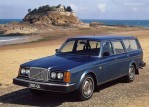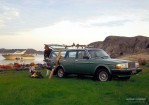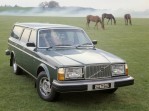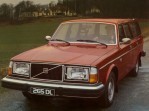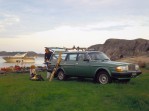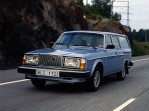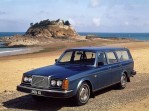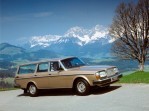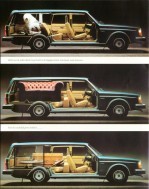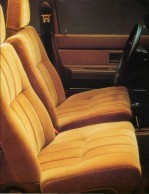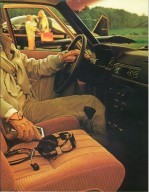Body style: Wagon (station wagon, estate, combi, touring)
Segment: Large
Production years: 1980, 1981, 1982
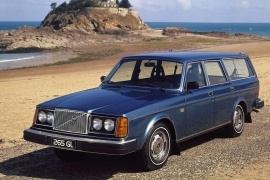 13 Photos
13 PhotosThe Swedish carmaker was still independent and tried to make its way on the market with its boxy-looking vehicles. Moreover, it offered a station-wagon based on the 200 series.
The station-wagon was introduced on the market in 1975, but in 1980 it was refreshed. While it was difficult to refresh a brick-shaped vehicle and looks different than a brick, Volvo tried its luck and improved the car's interior and made subtle exterior modifications. On top of that, it introduced an inline-six diesel engine, which it bought from Volkswagen.
Even though the 265 looked like a five-year-old kid designed it, the station wagon was more elaborate, if some would look into some details. It was a car built to meet and exceed the most drastically crash-tests in the world, which it passed with flying colors. For the U.S. market, Volvo had to install dual headlights. Hence the North-American legislation stated that the passenger vehicles had to have round headlights with rubber sealing around the lenses. For the European model, Volvo used its rectangular units, with the turn-signals and the parking lights placed on the corners.
Inside, the carmaker installed a comfortable interior with enough legroom for all passengers. A folding bench was fitted as standard, and that could expand the trunk area. Moreover, due to the vertical sidewalls and the vertical tailgate, it was easier to load and unload bigger items.
In the late '70s, the second oil crisis started to bite from the car industry. Volvo cut a deal with Volkswagen to use their inline-six diesel engines. They were not the most powerful on the market, but they ensure a high fuel-efficiency, especially when it was paired to a manual transmission. For the gasoline version, the 265 featured a 2.8-liter six-mill unit.
VOLVO 265 1980, 1981, 1982
- 2.8L V6 4MT RWD (155 HP)
VOLVO 265
2.8L V6 4MT RWD (155 HP)
ENGINE SPECS - 2.8L V6 4MT RWD (155 HP) | |
|---|---|
| Cylinders: | V6 |
| Displacement: | 2849 cm3 |
| Power: | 114 KW @ 5500 RPM 155 HP @ 5500 RPM 153 BHP @ 5500 RPM |
| Torque: | 170 lb-ft @ 3000 RPM 230 Nm @ 3000 RPM |
| Fuel System: | Monopoint Injection |
| Fuel: | Gasoline |
PERFORMANCE SPECS | |
|---|---|
| Top Speed: | 115 mph (185 km/h) |
| Acceleration 0-62 Mph (0-100 kph): | 10 s |
TRANSMISSION SPECS | |
|---|---|
| Drive Type: | Rear Wheel Drive |
| Gearbox: | 4-speed manual |
BRAKES SPECS | |
|---|---|
| Front: | Discs |
| Rear: | Discs |
TIRES SPECS | |
|---|---|
| Tire Size: | 185HR14 |
DIMENSIONS | |
|---|---|
| Length: | 188.18 in (4780 mm) |
| Width: | 67.32 in (1710 mm) |
| Height: | 57.48 in (1460 mm) |
| Front/rear Track: | 56.29/53.54 in (1,430/1,360 mm) |
| Wheelbase: | 103.93 in (2640 mm) |
| Ground Clearance: | 4.7 in (119 mm) |
| Cargo Volume: | 42.4 cuFT (1201 L) |
| Aerodynamics (Cd): | 0.44 |
WEIGHT SPECS | |
|---|---|
| Unladen Weight: | 3210 lbs (1456 kg) |
| Gross Weight Limit: | 3968 lbs (1800 kg) |
FUEL ECONOMY (NEDC) | |
|---|---|
| Combined: | 18.7 mpg US (12.6 L/100Km) |
